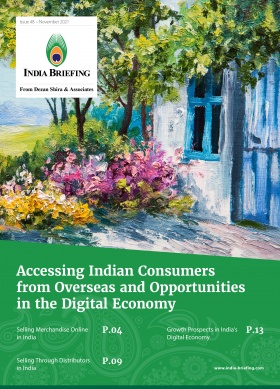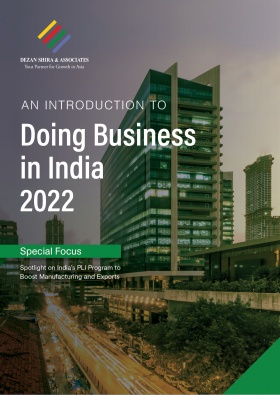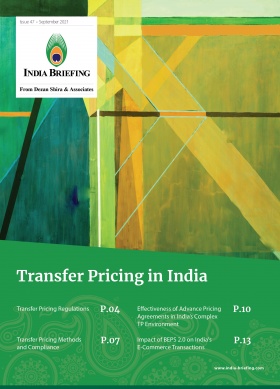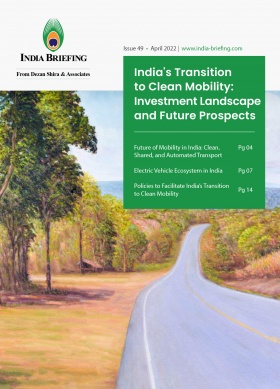What is ONDC? India’s Plan to Take on E-Commerce Giants Amazon, Flipkart
ONDC is incorporated as a private non-profit (Section-8) company to establish the public digital infrastructure needed to expand access to India’s e-commerce ecosystem – pegged as a US$200 billion opportunity by 2027. Since ONDC will not be following a platform-centric model, the Indian government hopes it will democratize the country’s online market for all buyers and sellers, irrespective of their size, so that millions of small retailers and mom-and-pop (kirana) stores get an equal opportunity.
Various public and private sector banks have already acquired stakes in ONDC. 24 companies, such as Flipkart-backed Ekart Logistics, hyperlocal quick commerce firm Dunzo, and digital payments firm PhonePe, are reported to be in the process of integrating with ONDC. Meanwhile, Alibaba and Ant Group have exited Paytm Mall’s parent entity, Paytm E-commerce Private Limited (PEPL), over its shift in business direction, away from traditional physical goods e-commerce to ONDC and export business. Google is also in talks with ONDC on how to integrate its services with the network.
Now in its pilot phase, ONDC has been rolled out in five cities – Delhi NCR, Bengaluru, Bhopal, Shillong, and Coimbatore. While operations are presently focused on retail and restaurants and facilitating real-time transactions, the open network will extend to other categories like travel and mobility. Based on the pilot exercise and after the network stabilizes, ONDC will be expanded to 100 cities and towns across India by October 2022. The goal is to accommodate 30 million sellers and 10 million merchants online.
India is keen to level the playing field for e-commerce operators and widen the digital market access for millions of small businesses and traders in the country. To this end, the government has established the Open Network for Digital Commerce (ONDC) as an alternative to platform aggregators like Amazon and Walmart-owned Flipkart, who have thus far monopolised India’s e-commerce landscape.
A pilot soft launch of the ONDC was rolled out April 29, in five cities spread across different geographical regions in India – Delhi National Capital Region, Bhopal, Bengaluru, Shillong, and Coimbatore. ONDC is not platform-centric, and its objective is to match the online consumer’s demand with the nearest available source of supply. Consumers can thus find any seller, product, or service via any compatible application or platform – offering real freedom of choice.
Despite the government’s enthusiasm, it remains to be seen how the ONDC will be implemented and whether it will reach its objectives. Leading online retail aggregators are also on wait-and-watch mode to assess whether they can participate on the open source network as well. Bloomberg reports that the Seattle-based Amazon is “trying to better understand the [ONDC] model to see if…[it] has a role to play.”
How does the Open Network for Digital Commerce work?
The ONDC will provide equal opportunities to all marketplace players, including consumers. It is a neutral platform that will set protocols for cataloguing, vendor match, and price discovery on an open source-basis, like the Unified Payments Interface (UPI).
What this means is that buyers and sellers can transact on ONDC irrespective of whether they are attached to any specific e-commerce portal. For instance, even if a seller X is registered on platform A, while the consumer is registered on platform B, the consumer can directly purchase products of seller X without registering on platform A from the ONDC network.
What does ‘open source’ mean?
To make a process or a software ‘open source’ implies that the technology or code deployed for the process is freely made available for everyone to use, redistribute, and modify. For instance, while the operating system of iOS is closed source (it cannot be legally modified or used), the android operating system is open source, making it possible for smartphone manufacturers, such as Samsung, Nokia, Xiaomi, etc., to modify it for their respective hardware.
ONDC aims at fostering open networks developed on open-sourced methodology, using open specifications and network protocols, and independent of any specific platform.
What is the significance of India’s open network for digital commerce?
ONDC is expected to digitize the entire value chain, standardize operations, foster inclusion of suppliers, usher in efficiency in logistics, and augment value for consumers.
Once the ONDC gets implemented and mandated, as is expected by August 2022, all e-commerce companies in India will have to operate using the same processes, akin to android-based mobile devices, irrespective of the brand. This would provide a boost to smaller online retailers as well as new entrants by ushering in discoverability, interoperability, and inclusivity. It will empower suppliers and consumers by breaking the monopoly of giant platforms to drive innovation and transform businesses in sectors like retail, food, and mobility.
Businesses are expected to benefit from transparent rules, lightweight investment, and lower cost of business acquisition. It is also expected that the time-to-market as well as time-to-scale shall also be substantially reduced.
Large e-commerce firms have protested as they have already invested heavily in the R&D as well as deployment of their own processes and technology. Yet, the government likely considers India’s e-commerce market value – estimated to reach US$200 billion by 2027 by Statista – to be significant enough for the participation and engagement of all types of business competitors.
Amazon and Flipkart alone have poured a cumulative US$24 billion to capture 80 percent of the Indian e-commerce market through their aggressive discounts and by promoting preferred sellers. Indian retail giants like Reliance and Tata have also launched retail platforms and shopping apps and super apps.
Currently, online retail accounts for about six percent of India’s overall retail market, but traditional retailers and merchants are aware of how rapidly this could change and do not wish to be locked out or priced out. With 800 million smartphone users, India’s appeal to global retailers is also not easily dismissed. The only other comparative market landscape, by size, is China where local rivals have thrived in an indigenously created ecosystem amid Beijing’s stringent rulemaking and supervision.
Meanwhile, the Competition Commission of India raided the offices of top sellers on Amazon and Flipkart on April 28, coincidentally a day before the ONDC was launched. The move was reportedly triggered by complaints of local traders who accused the marketplace platforms of predatory pricing, deep discounting, collusion with corporate sellers, and owning the inventory they sold via a network of holding companies.
Who are key stakeholders to the ONDC?
Twenty government and private organizations have confirmed investments worth INR 2.55 billion (US$33.34 million).
Several public and private sector banks, such as HDFC, Kotak Mahindra, Axis Bank, State Bank of India (SBI), and Punjab National Bank (PNB), have picked up stakes in ONDC. Axis Bank, HDFC, SBI, and Kotak Mahindra have acquired a share of 7.84 percent each, by individually investing INR 100 million (US$1.3 million) to purchase 10,00,000 equity shares of face value of INR 100 each. Earlier in November 2021, PNB had announced its plans to buy 9.5 percent share in ONDC.
Around 80 firms are working to integrate market players with the ONDC platform. These firms are making enterprise software and apps for sellers, buyers, logistics platforms, and payment gateways, as reported in The Economic Times. Meanwhile, The Business Standard has reported 24 companies, including high profile start-ups like Flipkart’s logistics arm eKart Logistics, hyperlocal delivery startup Dunzo, and payment service provider PhonePe, are in the process of integrating with ONDC.
As of May 15, 2022 – five seller platforms, one buyer platform, and one logistics partner are part of the pilot. It was announced by Paytm E-commerce Private Limited (PEPL), the parent entity of Paytm Mall, that the company will be pivoting to ONDC as its primary focus and to explore opportunities in exports businesses. PEPL also announced the exit of its early investors, China-based Alibaba and Ant Group, over this change in the business direction of the company.
On May 27, 2022 – Reuters reported that ONDC’s CEO T. Koshy said Google is in talks with the Indian government to integrate its shopping services with the network. Google’s current shopping business is as an aggregator of online listings – the company does not carry out orders or deliveries like e-commerce platforms, such as Amazon.
Nandan Nilekani, technology entrepreneur and co-founder of Infosys, is the most prominent individual associated with the ONDC, which he envisions to be a gamechanger in the e-commerce sector. He has previously worked on developing the Aadhar biometric ID system as a uniform proof of existence (that functions similar to the US social security ID) for people living in India. Nilekani also reportedly assisted with the development of the real-time digital payment system UPI, which surpassed 5 billion transactions in March 2022.
Background
On December 31, 2021, ONDC was incorporated as a private sector, non-profit (Section-8) company to democratize e-commerce in India and offer alternatives to proprietary e-commerce sites. ONDC was incubated by the Department for Promotion of Industry and Internal Trade (DPIIT) at the Quality Council of India.
A nine-member advisory council, including Nandan Nilekani from Infosys and National Health Authority CEO RS Sharma, have counselled the government on the measures required to design and accelerate the adoption of ONDC.
The initiative has been touted as necessary to end the dominance of behemoth platforms like Flipkart and Amazon that have been accused by the government of exercising monopoly, contrary to the law.
This article was first published on October 28, 2021. It was last updated on May 20, 2022.
About Us
India Briefing is produced by Dezan Shira & Associates. The firm assists foreign investors throughout Asia from offices across the world, including in Delhi and Mumbai. Readers may write to india@dezshira.com for more support on doing business in in India.
We also maintain offices or have alliance partners assisting foreign investors in Indonesia, Singapore, Vietnam, Philippines, Malaysia, Thailand, Italy, Germany, and the United States, in addition to practices in Bangladesh and Russia.
- Previous Article New Income Tax Rules in India Applicable During FY 2022-23
- Next Article India’s Approval Process for Logistics and Connectivity Projects: New Rules Announced










